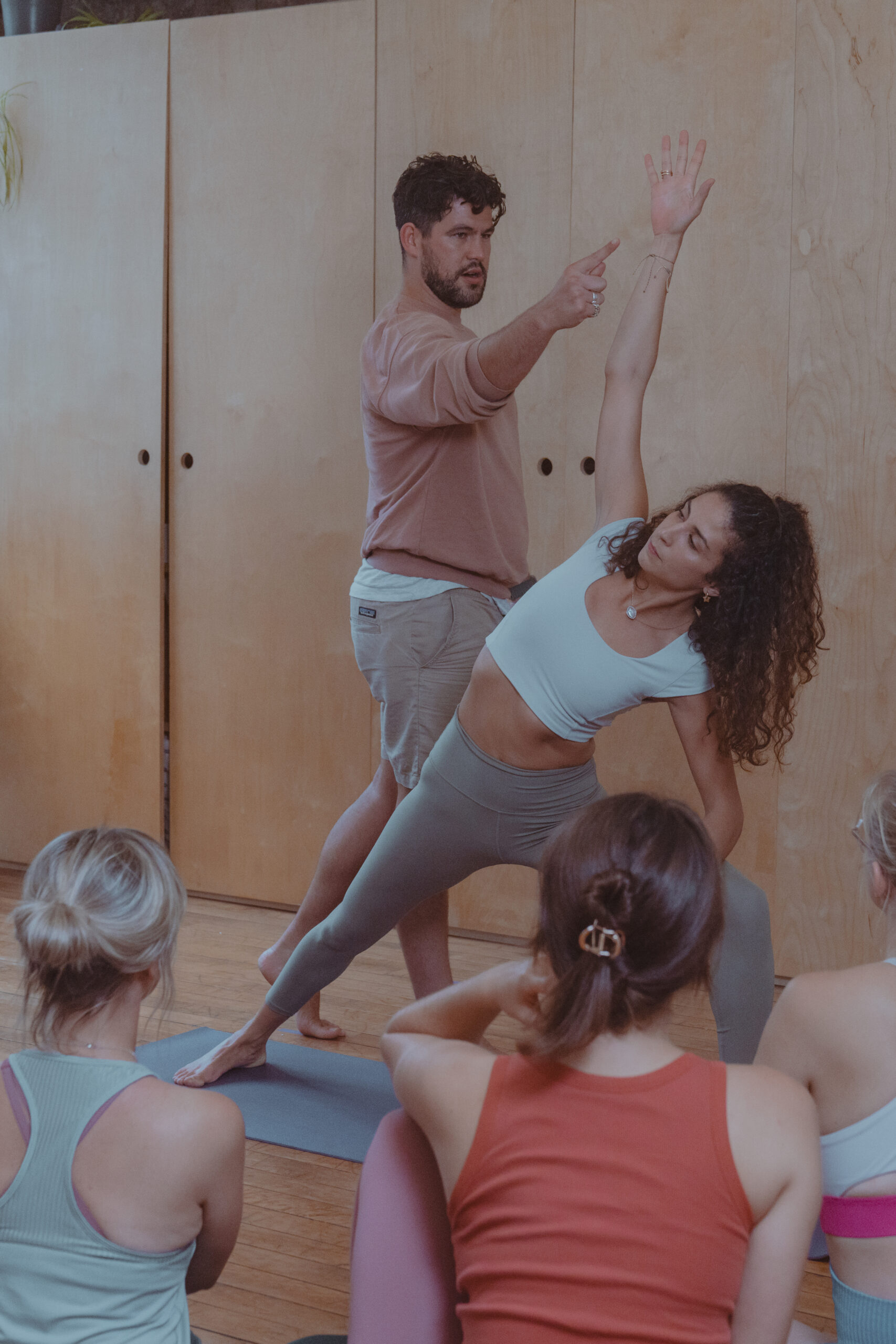Zoe Slatoff shares how Sanskrit can transform our yoga practice, and also why she wrote her book: Yogavataranam: The Translation of Yoga.
How can understanding Sanskrit terms in yoga change your practice?
Making little connections between the names of the poses and their forms can give the practice a greater depth of meaning through an awareness of the deep symbology that underlies the practice. Some posture names, like trikoṇÄsana, denote shapes, such as a triangle, or baddha konÄsana, bound angle. Some imply forms of nature – vá¹›ká¹£Äsana, a tree, or animals – kapotÄsana, a pigeon, or mÄyÅ«rÄsana, a peacock. Others, such as marÄ«cyÄsana or durvÄsÄsana, are named after sages or incarnations of gods, which allude to a story behind the shape. For example, matsyÄsana, fish pose, is named after the first avatar of the God Vishnu, in which he incarnated to save Manu, the first man, from a great flood. KÅ«rmÄsana is not just a turtle, but also named after the second avatar of Vishnu, in which he took the form of a tortoise to support Mount Mandara while the gods and the demons churned the ocean of milk to obtain the nectar of immortality, after they were cursed to lose their strength by the afore-mentioned sage DurvÄsas.
Other Sanskrit terms provide a framework within which the yoga practice exists. Understanding the different aspects of yoga, such as the yamas and niyamas, the ethical guidelines, beginning with ahiṃsÄ, non-violence, the guṇas, or three qualities of mind, the life force, prÄṇa and the nÄá¸Ä«s or channels, that carry it through the body help to expand the yoga practice beyond the physical body. Learning simple sÅ«tras, such as the classical definition of yoga in Yoga SÅ«tra 1.2 – yogaÅ› citta vá¹›tti nirodhaḥ (Yoga is the stilling of the fluctuations of the mind) or mantras, such as lokÄḥ samasthÄḥ sukhinoḥ bhavantu (may all be beings have happiness) allow us to set a greater intention for our practice.
‘What compelled you to write the book?’
I started studying Sanskrit fifteen years ago, during my first trip to India. I was staying at Post Office House (so named because it was next door to the office) and my roommate had a teacher who would come to the house a couple of days a week. His name was VinÄyaka, which means “remover of obstacles” and is an epithet for the elephant-headed god, GaṇeÅ›a. And remove the obstacles he did! I remember he would bring his harmonium – the Sanskrit sounds have always been linked to music in my mind. I loved learning the alphabet, the feeling of the strange sounds rolling off my tongue and the recognition of familiar words as I started to be able to string the letters together.
My intention in writing this book was to share that initial joy. It started as notes for a Sanskrit class I was teaching at my yoga shala, Ashtanga Yoga Upper West Side. When I realized I had 60 pages worth of notes, a friend suggested that I turn it into a book. From there, it seemed to take on a life of its own. I wanted to provide a pathway into studying Sanskrit and reading yoga-related texts that is inviting and gives students the opportunity to read yoga-related words and texts as soon as possible.

Zoe has a master’s degree in South Asian language and culture from Columbia University. Her thesis was a translation and exploration of a Sanskrit text on yoga and Ayurveda. She has practiced yoga since the age of fifteen; has traveled to Mysore almost annually to study at the Ashtanga Yoga Research Institute with Sri K. Pattabhi Jois, R. Sharath, and Saraswathi; and has been teaching for more than sixteen years. Her school, Ashtanga Yoga Upper West Side, is located in New York City. She is also available for in-person and Skype Sanskrit lessons, and has a new Sanskrit blog starting here.
Find Zoe’s book in our retail centres at Camden, Soho, and Chelsea.









